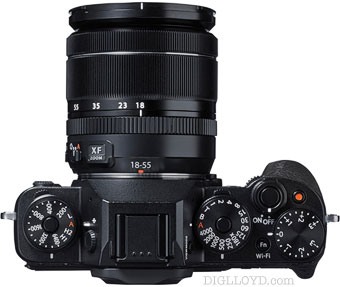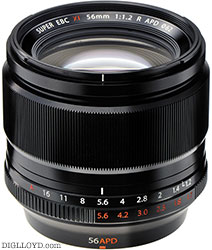EXCERPT page containing first few paragraphs. 2024-04-15 22:52:58
UA_SEARCH_BOT_null @ 13.59.36.203
For full access, subscribe here. Or click title to login. ![]()
56/1.2 APD vs 56/1.2: Defocused Bokeh
Here focus was at very close range so as to show the bokeh quality of out of focus light blobs. The point sources are irregular bullet holes in the metal siding of a barn. Some are circular, and some jagged.
The Fujifilm XF 56mm f/1.2 APD utilizes an apodization filter which is most effective from f/1.2 through f/2.8. This is why Fujifilm supplies the lens with a 3-stop ND filter to enable shooting at wide apertures even in very bright light. At f/4 and beyond, the effects are minimal, as will be seen below.
Some difficulty was encountered with the two lenses on every one of 15 or so comparisons: a shift of image center, observed when swapping lenses. The images here have been aligned by 42 pixels horizontally, and 15 pixels vertically. One of the lenses thus has its optical group rather off-center.
Article continues for subscribers...
Diglloyd Guide to Mirrorless is by yearly subscription. Subscribe now for about 25 cents a day ($90/year).
BEST DEAL: get full access to ALL 8 PUBLICATIONS for only about 75 cents a day!
Diglloyd Guide to Mirrorless offers comprehensive integrated coverage of most APS-C and full frame mirrorless cameras and lenses.
Special emphasis is placed on Sony full-frame, including Sony lenses and the high performance Zeiss Batis and Zeiss Loxia lenses plus Rokinon/Samyang and others. Fujifilm X, Olympus and Panasonic M4/3, Sigma dp Merrill and dp/sd Quattro are also covered in depth. Years in the making, it offers a wealth of material for choosing and using a mirrorless camera.
- Make better images by learning how to get the best results right away. For example, the best way to set up your Sony camera.
- Save money by choosing the right lens for your needs the first time, particularly with the numerous lenses available for Sony.
- Make better images, a sort of “cheat sheet” saving yourself months or years of ad-hoc learning—best practices and how-to and processing parameters are discussed and shown.
- Jaw-dropping image quality found nowhere else utilizing Retina-grade images up to full camera resolution, plus large crops.
- Real world examples with insights found nowhere else. Make sharper images just by understanding lens behavior you won’t read about elsewhere.
- Aperture series from wide open through stopped down, showing the full range of lens performance and bokeh.
- Optical quality analysis of field curvature, focus shift, sharpness, flare, distortion, and performance in the field.
Want a preview? Click on any page below to see an excerpt as well as extensive blog coverage, for example on Sony.




